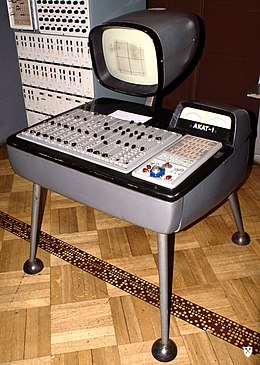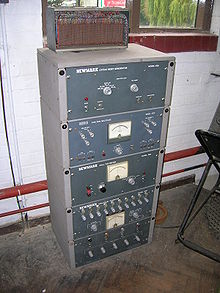/cdn.vox-cdn.com/uploads/chorus_image/image/60039409/msingleton_180612_2663_0006.0.jpg) |
| The world's fastest supercomputer is back in America - The Verge |
Super Computer
Uses of Supercomputers
In Pakistan Supercomputers are used by Educational Institutes like NUST for research purposes. Pakistan Atomic Energy commission & Heavy Industry Taxila uses supercomputers for Research purposes.
Space Exploration :
Supercomputers are used to study the origin of the universe, the dark-matters. For these studies scientist use IBM’s powerful supercomputer “Roadrunner” at National Laboratory Los Alamos.
Earthquake studies :
Supercomputers are used to study the Earthquakes phenomenon. Besides that supercomputers are used for natural resources exploration, like natural gas, petroleum, coal, etc.
Weather Forecasting :
Supercomputers are used for weather forecasting, and to study the nature and extent of Hurricanes, Rainfalls, windstorms, etc.
Nuclear weapons testing :
Supercomputers are used to run weapon simulation that can test the Range, accuracy & impact of Nuclear weapons.
Popular Supercomputers :
- IBM’s Sequoia, in United States
- Fujitsu’s K Computer in Japan
- IBM’s Mira in United States
- IBM’s SuperMUC in Germany
- NUDT Tianhe-1A in China

Mainframe Computer
Although Mainframes are not as powerful as supercomputers, but certainly they are quite expensive nonetheless, and many large firms & government organizations uses Mainframes to run their business operations. The Mainframe computers can be accommodated in large air-conditioned rooms because of its size. Super-computers are the fastest computers with large data storage capacity, Mainframes can also process & store large amount of data. Banks educational institutions & insurance companies use mainframe computers to store data about their customers, students & insurance policy holders.
Popular Mainframe computers
- Fujitsu’s ICL VME
- Hitachi’s Z800

Mini Computer
Minicomputers are used by small businesses & firms. Minicomputers are also called as “Midrange Computers”. These are small machines and can be accommodated on a disk with not as processing and data storage capabilities as super-computers & Mainframes. These computers are not designed for a single user. Individual departments of a large company or organizations use Mini-computers for specific purposes. For example, a production department can use Mini-computers for monitoring certain production process.
Popular Minicomputers
- K-202
- Texas Instrument TI-990
- SDS-92
- IBM Midrange computers
Micro Computer
Desktop computers, Gaming consoles, Sound & Navigation system of a car, Netbooks, Notebooks, PDA’s, Tablet PC’s, Smartphones, Calculators are all type of Microcomputers.


Notebook/Laptop
A LAPTOP (also Laptop Computer), often called a notebook, is a small, portable personal computer (PC) with typically having a thin LCD or LED computer screen mounted on the inside of the upper lid of the clamshell and an alphanumeric keyboard on the inside of the lower lid.
A specially designed computer chip that resides (sits) inside another device, such as a washing machine.
Here are 30 examples of embedded systems in daily life:
- Digital alarm clocks
- Electronic parking meters and parking pay stations
- Robotic vacuum cleaners (‘robovacs’)
- Smart watches and digital wrist watches
- Washing machines and dishwashers
- Home security systems
- Air-conditioners and thermostats
- Electric stoves, pressure cookers, and tea/coffee machines
- Traffic lights
- Vending machines
- Fire alarms and carbon monoxide detectors
- Printers, photocopy, fax machines and scanners
- Digital and video cameras
- Calculators
- Remote control gate keys
- Digital thermometers
- Motion sensors
- PDAs and hand-held computers
- Lighting systems
- GPS navigation devices
- Heart rate monitors and pacemakers
- CD players, iPods and MP3 players
- Parking lot ticket machines
- Cash registers
- Digital signature pads
- Electronic toys
- Refrigerators and freezers
- Electronic safes
- WiFi routers
- Automobile systems (cruise control, anti-lock braking system (ABS), transmission control, electronic fuel injection, suspensions systems, in-vehicle entertainment systems, etc.)
 |
| Polish analog computer AKAT-1 (1959) |
Analog computer
In contrast, digital computers represent varying quantities symbolically and by discrete values of both time and amplitude.
 |
| A 1960 Newmark analogue computer, made up of five units. This computer was used to solve differential equations and is currently housed at the Cambridge Museum of Technology |
Analog computers were widely used in scientific and industrial applications even after the advent of digital computers, because at the time they were typically much faster, but they started to become obsolete as early as the 1950s and 1960s, although remained in use in some specific applications, such as aircraft flight simulators, the flight computer in aircraft, and for teaching control systems in universities. More complex applications, such as aircraft flight simulators and synthetic aperture radar, remained the domain of analog computing (and hybrid computing) well into the 1980s, since digital computers were insufficient for the task
These type of computers are used to measure physical magnitude likes: Temperature, Length, Width, Pressure, weight etc. They are not accurate.
Digital Computer
A typical digital computer system has four basic functional elements: (1) input-output equipment, (2) main memory, (3) control unit, and (4) arithmetic-logic unit. Any of a number of devices is used to enter data and program instructions into a computer and to gain access to the results of the processing operation. Common input devices include keyboards and optical scanners; output devices include printers and monitors. The information received by a computer from its input unit is stored in the main memory or, if not for immediate use, in an auxiliary storage device. The control unit selects and calls up instructions from the memory in appropriate sequence and relays the proper commands to the appropriate unit. It also synchronizes the varied operating speeds of the input and output devices to that of the Arithmetic-Logic Unit (ALU) so as to ensure the proper movement of data through the entire computer system. The ALU performs the arithmetic and logic algorithms selected to process the incoming data at extremely high speeds—in many cases in nanoseconds (billionths of a second). The main memory, control unit, and ALU together make up the central processing unit (CPU) of most digital computer systems, while the input-output devices and auxiliary storage units constitute peripheral equipment.
Hybrid Computer
 |
| Polish Hybrid computer WAT 1001 |
Hybrid computers are computers that exhibit features of analog computers and digital computers. The digital component normally serves as the controller and provides logical and numerical operations, while the analog component often serves as a solver of differential equations and other mathematically complex equations. The first desktop hybrid computing system was the Hycomp 250, released by Packard Bell in 1961.
Hybrid computers can be used to obtain a very good but relatively imprecise 'seed' value, using an analog computer front-end, which is then fed into a digital computer iterative process to achieve the final desired degree of precision. One of the main technical problems to be overcome in hybrid computers is minimizing digital-computer noise in analog computing elements and grounding systems.
They are generally used in laboratories for scientific research.























